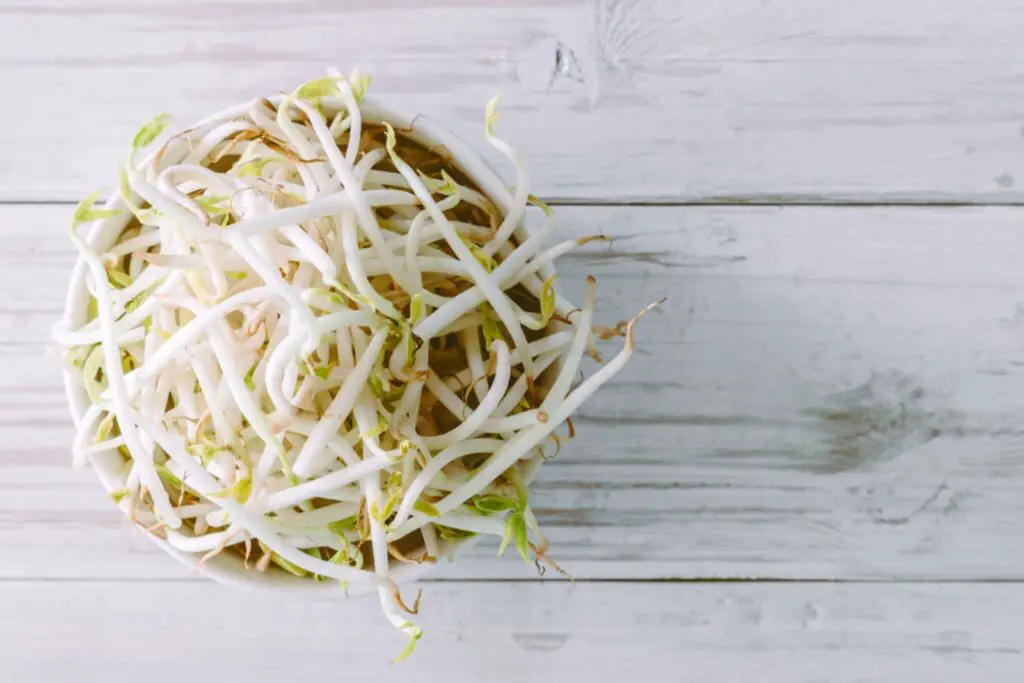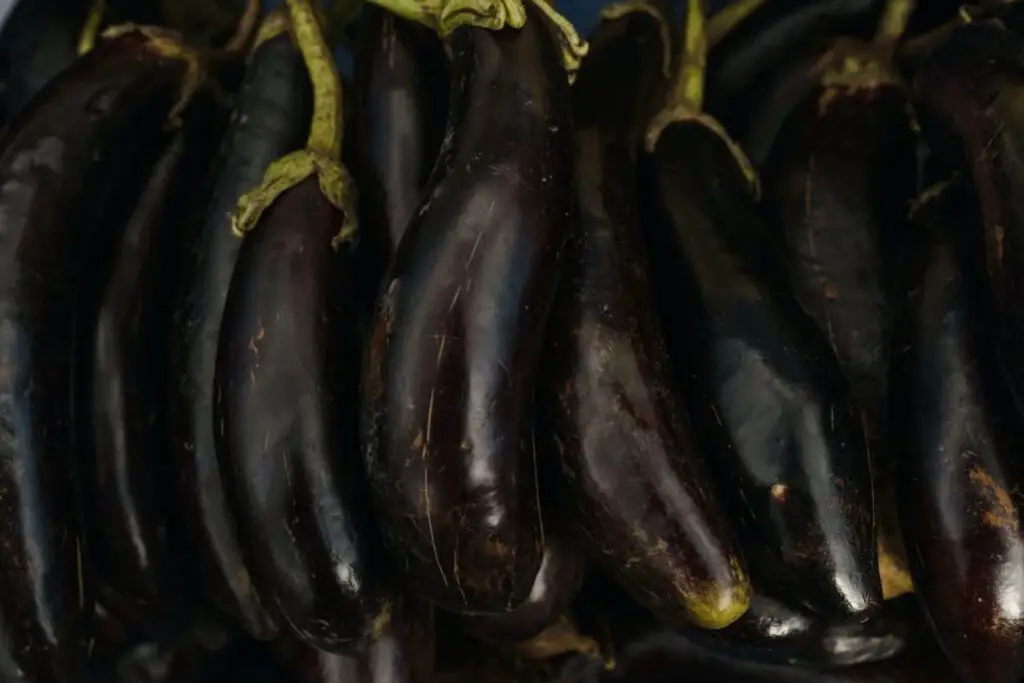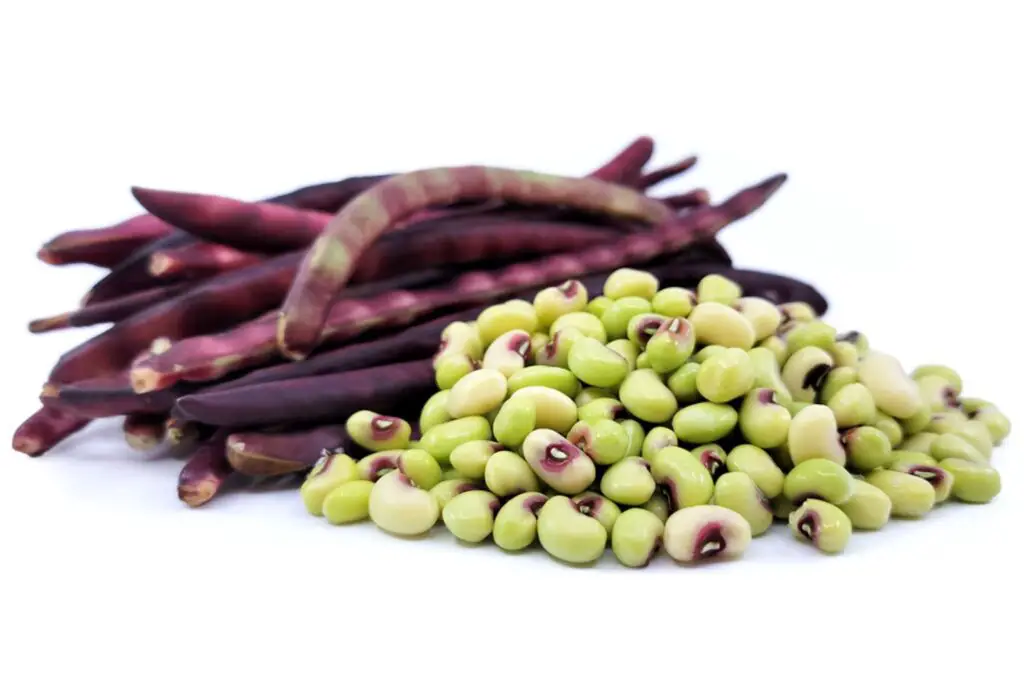
Grape tomatoes are petite, juicy, and bursting with flavor, making them a delightful addition to salads, sauces, and various culinary creations. Whether you’ve grown an abundance of grape tomatoes in your garden or stumbled upon a fantastic deal at the farmers’ market, freezing them can be a savvy way to preserve their deliciousness for future use. This article will guide you through the step-by-step process of freezing grape tomatoes, ensuring that they maintain their taste and texture even when they’re not in season.
Here’s a detailed guide on how to freeze grape tomatoes:
Step 1: Select fresh grape tomatoes
Selecting the right grape tomatoes is the crucial first step in ensuring that your frozen grape tomatoes turn out delicious and maintain their quality during freezing. Here’s why it matters:
- Flavor and Texture: Ripe, fresh grape tomatoes are bursting with flavor and have a pleasing texture. When you freeze them, they retain much of their natural taste and juiciness. By starting with top-quality tomatoes, you’re setting the stage for a flavorful outcome.
- Free From Spoilage: Inspect the tomatoes carefully to ensure they are free from any signs of mold or damage. Moldy or damaged tomatoes can affect the overall quality of your frozen grape tomatoes and may introduce unwanted flavors or textures.
- Longer Shelf Life: High-quality grape tomatoes have a longer shelf life, both before and after freezing. This means you can enjoy the fruits of your labor or a great market find for an extended period without worrying about spoilage.
- Better Nutritional Value: Fresh grape tomatoes are packed with essential vitamins, minerals, and antioxidants. Freezing them while they are at their freshest preserves their nutritional value, ensuring you can benefit from their health benefits when you use them in your dishes later on.
- Even Freezing: When you choose tomatoes of uniform size and ripeness, they will freeze more evenly. This ensures that each tomato piece maintains its structural integrity, making them easier to use in recipes when you defrost them.
Step 2: Wash the grape tomatoes
Washing grape tomatoes may seem like a straightforward task, but it’s a crucial step in preparing them for freezing. Here’s why washing them is essential and how to do it properly:
- Removal of Contaminants: Grape tomatoes, like any fresh produce, can accumulate dirt, dust, and other contaminants during growth and handling. Washing them under cold running water helps remove these impurities, ensuring that your frozen tomatoes are clean and safe to eat.
- Pesticide Residue: If the grape tomatoes were grown conventionally, there might be residual pesticides on the skin. Washing them thoroughly can reduce the presence of these chemicals, making your frozen tomatoes a healthier choice.
- Preventing Cross-Contamination: Washing tomatoes helps prevent cross-contamination. Even if the tomatoes appear clean, they may have been in contact with contaminated surfaces during harvesting, packaging, or transport. Properly washing them minimizes the risk of introducing harmful microorganisms into your freezer.
Here’s how to wash grape tomatoes effectively:
- Use a Colander or Strainer: Place the selected grape tomatoes in a colander or a fine-mesh strainer. This allows water to flow through easily while keeping the tomatoes contained.
- Rinse Under Cold Running Water: Turn on the cold tap water and let it flow gently over the tomatoes. Use your hands to gently agitate the tomatoes while rinsing. This helps dislodge any dirt or debris.
- Inspect and Repeat: While rinsing, take a moment to inspect each tomato. If you notice any stubborn dirt or residue, gently rub the tomato under the running water to remove it. Continue rinsing until all tomatoes are clean.
- Shake Off Excess Water: After rinsing, gently shake the colander or strainer to remove excess water. You want the tomatoes to be damp but not dripping wet.
Step 3: Sort and prep the tomatoes
Sorting and preparing grape tomatoes before freezing is a crucial step that contributes to the overall quality and convenience of your frozen tomatoes. Here’s why it’s essential and how to do it effectively:
- Quality Control: Not all grape tomatoes will be in perfect condition, and some may have imperfections such as blemishes, bruises, or soft spots. Sorting allows you to identify and remove these tomatoes, ensuring that only the best-quality ones are frozen.
- Even Freezing: Tomatoes that are in good condition freeze more evenly and maintain their structural integrity. Removing any damaged or overripe tomatoes helps prevent them from affecting the texture and flavor of the rest of the batch.
- Preventing Spoilage: Overripe or soft tomatoes are more prone to spoilage, and their presence among your frozen tomatoes can lead to the degradation of the overall quality of the batch. By setting them aside for immediate use or discarding them, you avoid potential spoilage issues.
Here’s how to sort and prep grape tomatoes effectively:
- Inspect Each Tomato: Take a moment to inspect each grape tomato individually. Look for any stems, blemishes, bruises, or soft spots.
- Remove Stems: If the tomatoes have stems attached, gently twist or cut them off. Stems can be tough and undesirable in frozen tomatoes.
- Deal with Blemishes: If you come across tomatoes with minor blemishes or bruises, you can trim away the affected areas with a small knife. However, if the blemish is extensive or affects the majority of the tomato, it’s best to set it aside for immediate use or discard it.
- Check for Over Ripeness: Squeeze each tomato gently to check for overripeness. If a tomato feels excessively soft or squishy, it’s likely overripe and should be set aside for immediate consumption or discarded.
Step 4: Freeze them whole or halved
When it comes to freezing grape tomatoes, you have the flexibility to choose between two options: freezing them whole or halved. Your choice depends on your intended use and personal preference. Here’s an explanation of each option:
Freezing Whole Grape Tomatoes:
- Convenience: Freezing grape tomatoes whole is the quicker and simpler option. It’s ideal if you plan to use them in dishes where their small size won’t be an issue, such as in sauces, stews, or casseroles.
- Preservation of Shape: Freezing them whole helps maintain the shape and appearance of the tomatoes. When you defrost them, they will still resemble fresh grape tomatoes.
- Snacking: Whole frozen grape tomatoes can also be a convenient and healthy snack option. They can be eaten frozen as a refreshing, bite-sized treat.
Freezing Halved Grape Tomatoes:
- Versatility: Halving grape tomatoes before freezing them offers more versatility in your cooking. They are excellent for dishes like salads, where the smaller pieces blend seamlessly.
- Faster Cooking: Halved tomatoes cook more quickly than whole ones, making them a time-saving choice for recipes with shorter cooking times.
- Enhanced Flavor Release: Halved tomatoes release their juices and flavors more readily, which can enhance the taste of your dishes.
Here’s how to execute each option:
Freezing Whole Grape Tomatoes:
- Once you have sorted and prepped your grape tomatoes, spread them in a single layer on a baking sheet lined with parchment paper.
- Ensure the tomatoes are not touching each other to prevent them from freezing together.
- Place the baking sheet in the freezer and let the tomatoes freeze for about 1 to 2 hours or until they are completely solid.
- Once frozen, transfer the tomatoes to airtight containers or freezer bags for long-term storage.
Freezing Halved Grape Tomatoes:
- After sorting and prepping the grape tomatoes, cut them in half lengthwise.
- Spread the halved tomatoes in a single layer on a baking sheet lined with parchment paper.
- As with whole tomatoes, ensure that the halved tomatoes are not touching each other on the baking sheet.
- Freeze them for 1 to 2 hours or until they are completely frozen.
- Transfer the frozen halved tomatoes to airtight containers or freezer bags for storage.
Whether you choose to freeze your grape tomatoes whole or halved, both methods are effective for preserving the vibrant flavors and nutritional value of these small but delightful fruits. Your choice will largely depend on how you plan to use them in your culinary creations.
Is it necessary to remove seeds from grape tomatoes before freezing?
No, it is not necessary to remove seeds from grape tomatoes before freezing. The seeds do not adversely affect the freezing process or the quality of the tomatoes when they are thawed and used in recipes. You can choose to leave the seeds intact or remove them based on your personal preference and the specific requirements of your recipes.
Step 5: Flash-freeze the grape tomatoes
Flash-freezing grape tomatoes is a crucial step that ensures they remain individual and don’t clump together during storage. This process helps preserve the quality of the tomatoes and makes them more convenient to use in various dishes. Here’s why flash-freezing is essential and how to do it effectively:
- Prevents Clumping: When grape tomatoes are placed in the freezer without flash-freezing, they can stick together, forming a solid mass. This makes it challenging to remove just the desired amount when you need them, and you might end up thawing more than necessary.
- Maintains Texture: Flash-freezing locks in the tomatoes’ natural texture by preventing them from becoming mushy or clumped together. Individual freezing ensures that each tomato piece retains its shape and integrity.
- Convenience: Flash-frozen grape tomatoes are easy to work with in recipes. You can take out as many as you need without thawing the entire batch, allowing for greater flexibility in your culinary creations.
Here’s how to flash-freeze grape tomatoes effectively:
- Prepare the Tomatoes: After sorting and prepping the grape tomatoes and deciding whether to freeze them whole or halved (as discussed in Step 4), lay them out on a baking sheet lined with parchment paper. Ensure they are spread out evenly and not touching each other.
- Freeze: Place the baking sheet with the prepared grape tomatoes in the freezer. Allow them to freeze for approximately 1 to 2 hours, or until they are completely frozen solid. The exact time may vary depending on your freezer’s temperature and the quantity of tomatoes.
- Check for Freezing: To check if they are adequately frozen, gently touch a few tomatoes. They should be hard and not yield to pressure. If they are still soft, give them a bit more time in the freezer.
- Transfer to Storage Containers: Once the grape tomatoes are fully frozen, promptly transfer them to airtight containers or freezer bags. This step should be done quickly to prevent any thawing during the transfer.
Step 6: Package and seal the grape tomatoes
After flash-freezing your grape tomatoes, the next crucial step is to properly package and seal them. This step is essential for maintaining the quality and flavor of the tomatoes during their time in the freezer. Here’s why packaging and sealing are important and how to do it effectively:
- Preventing Freezer Burn: When food is exposed to air in the freezer, it can develop freezer burn, which affects its taste and texture. Packaging grape tomatoes in airtight containers or freezer bags helps create a barrier that prevents air from coming into contact with the tomatoes, reducing the risk of freezer burn.
- Preserving Flavor and Texture: Airtight packaging helps maintain the natural flavors and textures of the grape tomatoes. It prevents moisture loss and the intrusion of unwanted odors from other freezer items.
- Convenience: Properly sealed containers or bags make it easy to store and access your frozen grape tomatoes. They also allow you to take out just the desired amount without having to defrost the entire batch.
Here’s how to package and seal grape tomatoes effectively:
- Choose Appropriate Containers or Bags: Select airtight containers or high-quality freezer bags designed for long-term storage. Make sure they are clean and dry before use.
- Portion Control: If you plan to use the tomatoes in specific quantities, consider portioning them accordingly before packaging. This makes it more convenient to grab the amount you need for each recipe.
- Transfer the Tomatoes: Carefully transfer the flash-frozen grape tomatoes into the chosen containers or bags. Be gentle to avoid damaging the tomatoes.
- Remove Air: To prevent freezer burn, it’s crucial to remove as much air as possible from the packaging. For containers, press plastic wrap directly against the tomatoes before sealing with the lid. For freezer bags, gently squeeze out excess air as you seal them.
- Seal Tightly: Seal the containers or bags tightly to create an airtight seal. If using freezer bags, consider double-bagging for added protection against freezer burn.
Can I freeze grape tomatoes in glass containers?
Yes, you can freeze grape tomatoes in glass containers, but it’s important to follow specific guidelines to prevent the containers from breaking. Use freezer-safe glass containers that are designed for low temperatures. Leave sufficient space at the top to allow for expansion as the tomatoes freeze, as liquid in the tomatoes may expand during freezing. Additionally, cool the tomatoes to room temperature before placing them in the glass container to further reduce the risk of breakage due to temperature extremes.
Step 7: Label and date the packages
Labeling and dating the packages of your frozen grape tomatoes might seem like a small detail, but it’s a crucial step in ensuring their quality and safety. Here’s why labeling and dating are essential and how it contributes to the efficient use of your frozen tomatoes:
- Freshness Tracking: By marking the date of freezing on each container or bag, you create a clear record of when the tomatoes were placed in the freezer. This information is vital for tracking the freshness of your stored tomatoes.
- Rotation and Use: Labeling allows you to implement a first-in, first-out (FIFO) system in your freezer. This means you use the oldest frozen tomatoes before the newer ones. Consuming them in the order they were frozen helps prevent the tomatoes from staying in the freezer for extended periods, which can lead to a loss in quality.
- Preventing Waste: Knowing the freezing date enables you to use your frozen grape tomatoes in a timely manner. This minimizes the risk of forgetting about them or letting them go past their peak quality and ending up as food waste.
Here’s how to label and date the packages effectively:
- Use a Permanent Marker: Ensure you use a permanent marker, as it won’t smudge or fade over time. Write directly on the container or bag, making the date and any other relevant information clear and legible.
- Include Additional Information: While dating is the most crucial piece of information, you can also add other details, such as the contents (e.g., “Grape Tomatoes”) or any specific portion sizes, if applicable.
- Keep It Consistent: Maintain a consistent labeling system across all your frozen grape tomato packages. This makes it easy to identify and retrieve the oldest packages when it’s time to use them.
- Check and Rotate: Periodically check the labels on your frozen grape tomato packages. As you use them, rotate in newer packages to ensure you’re always using the oldest ones first.
- Monitor Shelf Life: Be aware of the recommended storage duration for frozen grape tomatoes, typically around 6-8 months. Keep track of how long each package has been in the freezer to avoid using tomatoes that have been stored for too long.
Step 8: Store in the freezer
Storing your sealed containers or bags of grape tomatoes in the freezer is the final step in the process of preserving these delightful fruits for future use. Proper storage in the freezer is critical to maintaining their quality and ensuring they are safe to eat. Here’s why this step is essential and how to do it effectively:
- Preservation of Quality: The freezer is your grape tomatoes’ best friend when it comes to preserving their taste, texture, and nutritional value. Storing them at the appropriate temperature ensures they remain frozen solid, preventing the growth of harmful bacteria and maintaining their freshness.
- Minimizing Freezer Burn: Placing the sealed containers or bags in the freezer’s coldest and least disturbed section reduces the risk of temperature fluctuations, which can lead to freezer burn. Freezer burn can affect the tomatoes’ flavor and texture.
- Storage Duration: Grape tomatoes can be stored in the freezer for approximately 6-8 months while maintaining their quality. After this period, they may still be safe to eat, but their flavor and texture may deteriorate.
Here’s how to store your frozen grape tomatoes in the freezer effectively:
- Choose a Suitable Location: Select a section of your freezer where the temperature remains consistently low, typically around -18°C (0°F) or lower. Avoid placing them near the freezer door or in areas where the temperature might fluctuate due to frequent opening and closing.
- Organize Efficiently: Arrange the sealed containers or bags in a way that makes them easily accessible. Consider using clear containers or labeling the packages prominently to identify them quickly when you need them.
- Maintain Order: Be mindful of maintaining the order of your frozen grape tomatoes. Use a first-in, first-out (FIFO) system, ensuring that you use the oldest packages before the newer ones. This practice minimizes the chances of any tomatoes being stored for an extended period.
- Monitor Storage Duration: Keep track of when each package was frozen by referring to the labels you added in Step 7. This helps you use the tomatoes within their recommended storage duration to enjoy them at their best.
Other related questions
How do I defrost grape tomatoes?
To defrost grape tomatoes, transfer the desired quantity from the freezer to a bowl and place them in the refrigerator for several hours or overnight. Alternatively, immerse them in a bowl of cold water to speed up the process, changing the water every 30 minutes. Do not use a microwave for defrosting, as it may cause undesirable texture changes.
Should I thaw frozen grape tomatoes before using them in recipes?
The necessity to thaw frozen grape tomatoes before using them in recipes depends on the specific recipe. For cooked dishes like sauces, soups, and stews, you can add frozen grape tomatoes directly to the cooking process without thawing. However, for salads and uncooked recipes where texture is crucial, it is advisable to thaw the tomatoes in the refrigerator before use. Thawed tomatoes can release excess moisture, so consider draining them if needed for your recipe.
Can I refreeze grape tomatoes?
It is not recommended to refreeze grape tomatoes once they have been thawed. Refreezing can lead to textural changes, loss of flavor, and potential spoilage due to temperature fluctuations. To minimize waste, it’s advisable to use the thawed tomatoes promptly in recipes like sauces, soups, or stews.
How do I know if the grape tomatoes have gone bad after being frozen?
To determine if frozen grape tomatoes have gone bad, check for signs of freezer burn, which include dry, discolored patches on the tomatoes. Spoiled tomatoes may also develop an off-putting odor or a sour smell. Additionally, if the texture has become excessively mushy or slimy, it is advisable to discard them, as these are indications of spoilage.
Can I freeze grape tomatoes with the skins on?
Yes, grape tomatoes can be frozen with their skins on. The skins act as a protective layer during freezing and can be easily removed after thawing if desired. This method helps preserve their flavor and nutritional value.
What are some recipe ideas for using frozen grape tomatoes?
Frozen grape tomatoes are versatile and can be used in various recipes. They work well in sauces like marinara or salsa, where their natural sweetness and flavor can shine. You can also add them to soups, stews, or chili to infuse a burst of tomato essence, or use them in roasted vegetable dishes for added depth of taste. Additionally, they can be pureed for a flavorful tomato base in numerous culinary creations, providing a taste of summer even in the colder months.
Can I freeze grape tomatoes that have been cooked?
Yes, you can freeze grape tomatoes that have been cooked. However, it’s important to consider that the texture of the tomatoes may change slightly upon thawing. Cooked grape tomatoes are suitable for recipes like sauces, soups, and stews, where the altered texture is less noticeable and the flavor can still enhance the dish.
Can I use frozen grape tomatoes directly in salads?
Using frozen grape tomatoes directly in salads is not recommended. Freezing can change the texture of tomatoes, making them soft and mushy upon thawing, which may not be desirable in a salad. It’s best to reserve frozen grape tomatoes for cooked dishes where their altered texture is less noticeable, and their flavor can still contribute to the overall dish. For salads, consider using fresh tomatoes for the best crisp texture and taste.








